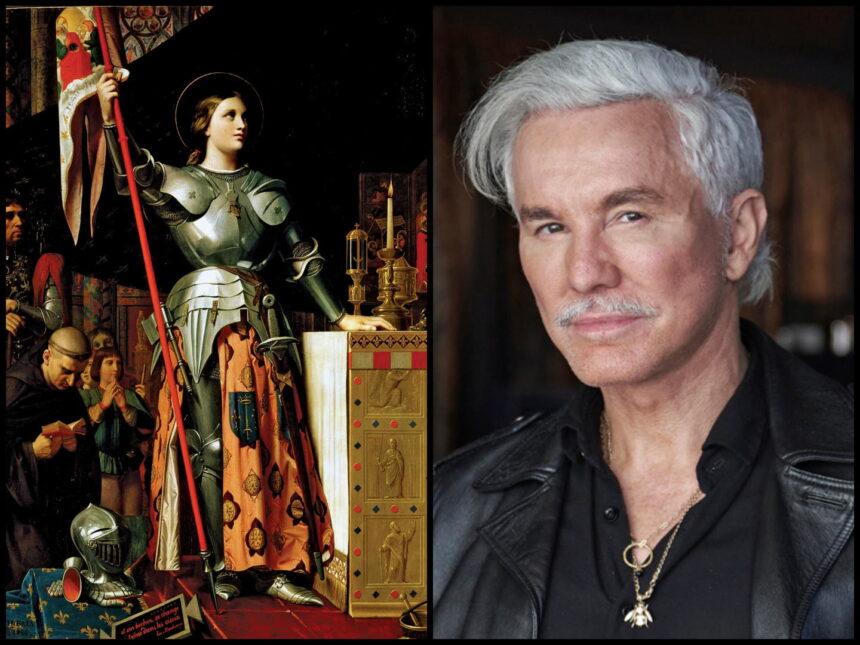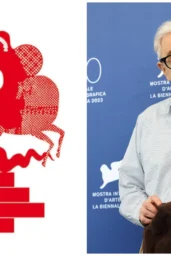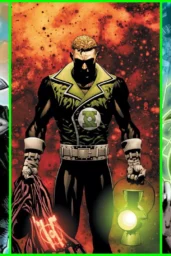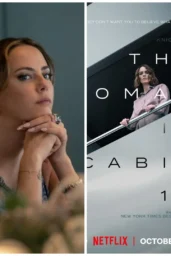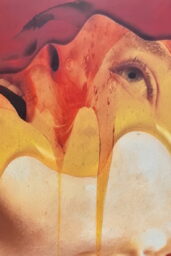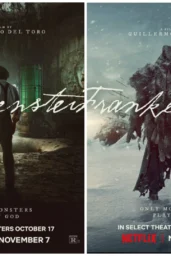The last time Baz Luhrmann adapted a tortured legend, he dressed Elvis Presley in rhinestones and set him loose in a split-screen montage of American obsession. Now he's shifting centuries and saints, swapping Vegas neon for medieval visions—but don't expect less spectacle.
This fall, Luhrmann begins shooting his long-whispered Joan of Arc film, now confirmed to be based on Blood Red, Sister Rose, the 1974 novel by Schindler's List author Thomas Keneally. Warner Bros. is producing. That pairing alone—Luhrmann's flair for decadence and Keneally's philosophical depth—is enough to make your brain itch. What are they even making? A canonization or a breakdown?
Turns out, maybe both.
Not a Biopic. A Benediction—and a Breakdown.
This isn't “The Passion of Joan of Arc.” In fact, it sounds like Luhrmann might be throwing Dreyer's sacred minimalism off a cliff and building a gothic theme park in its place. Co-written with British playwright Ava Pickett (1536), whose work leans hard into power structures and historical revisionism, the film promises a dreamlike dive into Joan's fractured psyche.
That phrase alone—”fractured psyche”—feels like a mission statement.
We're not watching a clean arc of sainthood here. This is Joan hallucinating angels and sweating through chainmail. She's going to be haunted by God and war and the stench of men who want to burn her or bless her, depending on the hour. Think less “God's chosen warrior” and more “teen girl collapsing under divine pressure, inside a broken world.”
It makes sense. Keneally's novel is intimate and interior. He doesn't just chronicle her military victories or courtroom trials—he gets under the skin of a girl who heard voices and dared to obey them.
And if Luhrmann can do one thing better than most, it's crafting emotional chaos through visual excess. If he's been walking around Gold Coast wearing medieval armor for research (he has), then this thing is probably going full opulent fever-dream. Saints will shimmer. Demons will whisper. Kings will pout. And Joan? She'll burn—visibly and metaphorically.
Keneally Returns to the Screen—31 Years After Spielberg
This is no small thing for Keneally. The last time one of his major works got the Hollywood treatment, Spielberg's Schindler's List swept the Oscars and redefined historical cinema. That was 1993. Now, three decades later, Keneally is handing over another sacred text—not to a documentarian, but to a maximalist.
Luhrmann isn't known for restraint, but maybe that's the point. Joan of Arc isn't a restrained story. It's messy and contradictory and loaded with theological fire. Maybe it's time we stop treating her like a silent statue and start letting her scream again.
And make no mistake: this Joan will scream.
The Casting Question—Still a Mystery (But Not for Long)
An actress has reportedly been cast, though Warner Bros. is keeping her name locked down. Rumors floated earlier this year that Bella Ramsey (The Last of Us) had been approached, and honestly? That makes sense. Ramsey's got the grit, the presence, and the kind of face that feels carved from time—soft but unflinching.
But nothing's confirmed, and Luhrmann is no stranger to wildcard picks. Could be a discovery. Could be someone famous in disguise. The silence is almost louder than a reveal.
Behind the Scenes: A Familiar Crew, A New Holy Ground
Catherine Martin—Luhrmann's creative partner in both design and marriage—is returning for costumes and production. If past projects (Moulin Rouge!, The Great Gatsby, Elvis) are any indication, she won't just be dressing characters—she'll be painting psychological maps in velvet and steel.
Filming begins later this year in Gold Coast, Luhrmann's home base. And though no release date has been set, a 2026 festival run feels likely if the schedule holds. Which, with Luhrmann, is always a big if.
But that's part of the thrill. He doesn't make easy films. He makes experiences—you love them, or you recoil.
Joan of Arc deserves no less.

